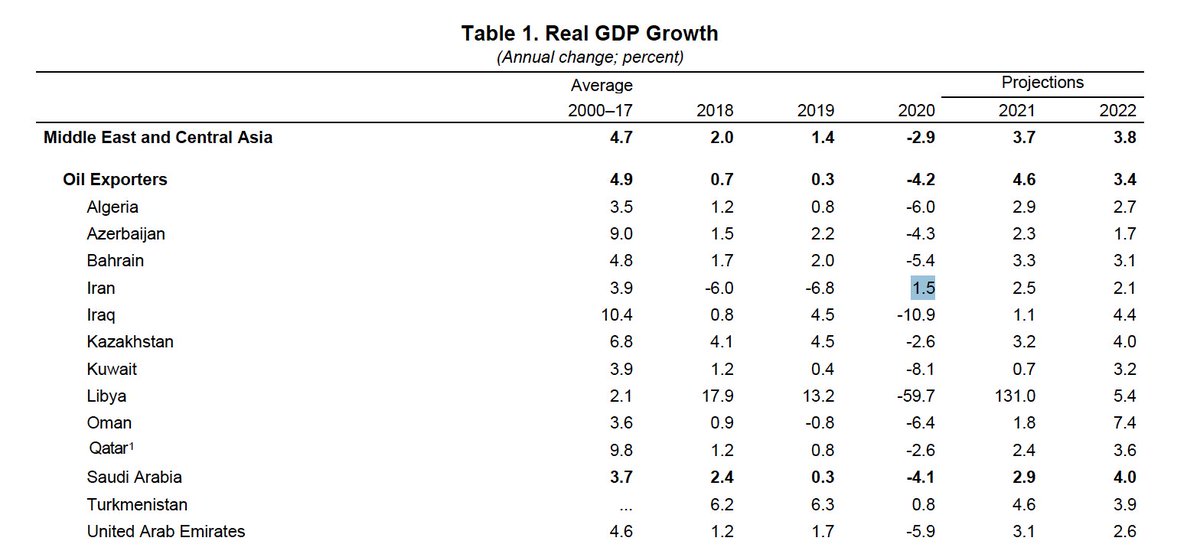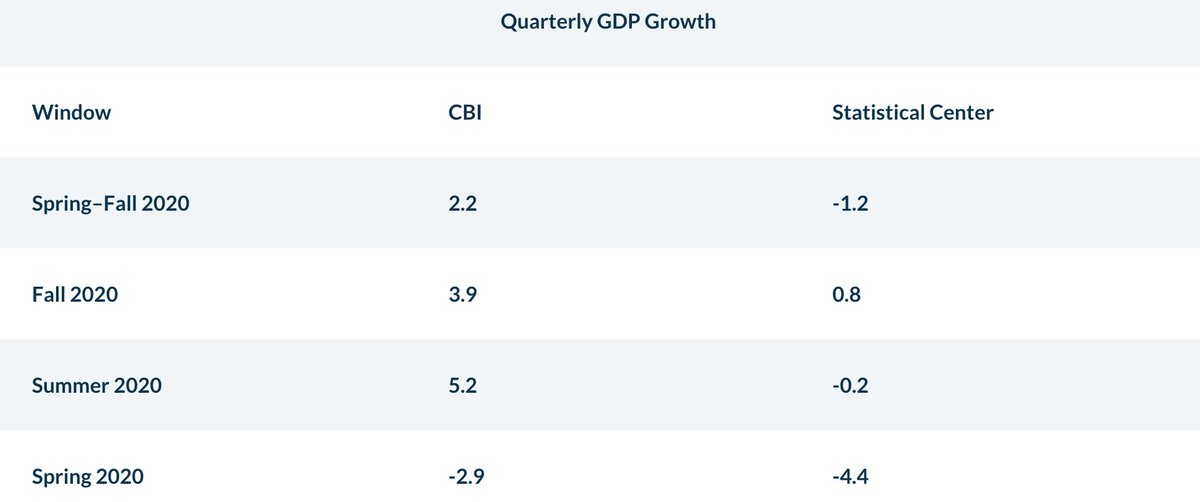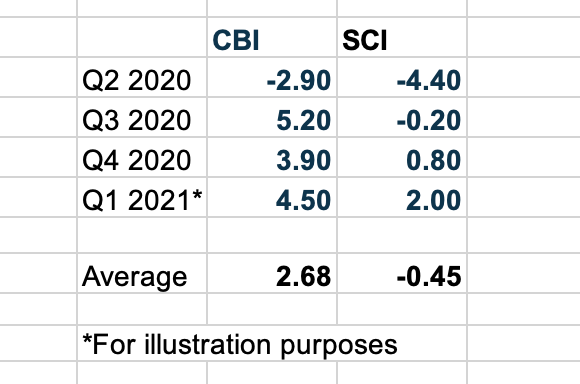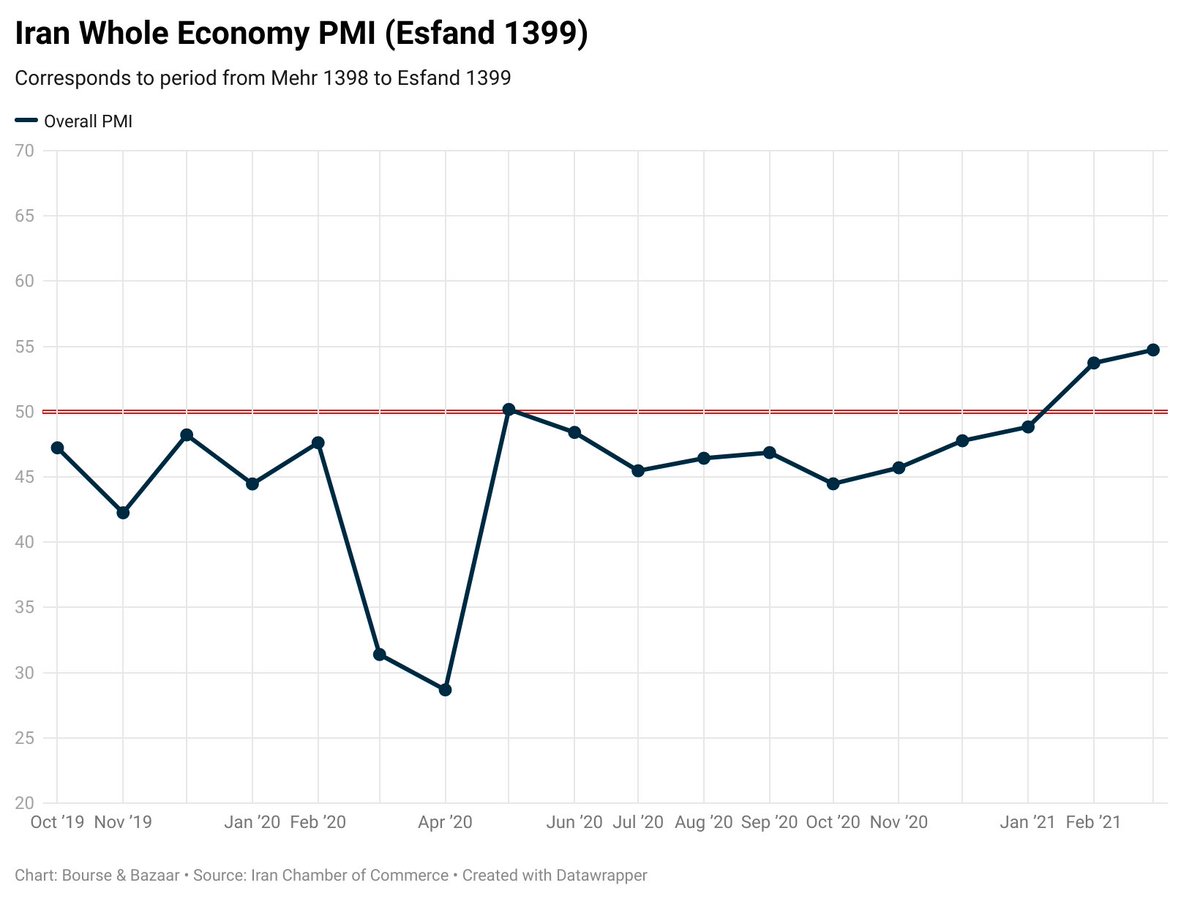1. So @SGhasseminejad has a new piece that is a really good example of the analysis that FDD tries to pass off as rigorous but is in bad faith.
He deliberately misleads around the periodisation of IMF data to insist Iran& #39;s economy "did not grow in 2020." https://www.fdd.org/analysis/2021/04/16/irans-economy-did-not-grow-in-2020/">https://www.fdd.org/analysis/...
He deliberately misleads around the periodisation of IMF data to insist Iran& #39;s economy "did not grow in 2020." https://www.fdd.org/analysis/2021/04/16/irans-economy-did-not-grow-in-2020/">https://www.fdd.org/analysis/...
2. Earlier this month, the IMF revised up GDP growth for Iran in 2020, estimating that Iran& #39;s economy grew 1.5%, despite the impact of sanctions and the pandemic.
This wasn& #39;t good news for those who believe Trump& #39;s sanctions give the US immense leverage.
This wasn& #39;t good news for those who believe Trump& #39;s sanctions give the US immense leverage.
3. In his piece, Ghasseminejad aims to cast doubt on the IMF estimate. He writes: "Did the economy of the Islamic Republic – under tough U.S. sanctions and hit hard by COVID-19 – really grow? Official data published by Tehran indicate, contra the IMF, that the answer is no."
4. He points to quarterly GDP data from the Central Bank of Iran and the Statistical Center of Iran. This is good. These are official sources, which diverge in estimates, but offer a picture of what& #39;s happening in the economy that we can interpret. This is what the IMF does too.
5. Ghasseminejad writes: "According to the CBI’s data, the Islamic Republic’s economy grew 0.1 percent in the... calendar year of 2020, while the [SCI] estimates that the economy shrank 2.1 percent. Neither of these two datasets support the IMF’s 1.5 percent estimate."
6. But there is a very simple explanation that Ghasseminejad glosses over. He writes in literally the next paragraph, "The IMF’s estimate may be based on the Persian calendar year." This is important. That would eliminate Q1 2020, when the pandemic struck Iran, from the estimate.
7. Well, that is *exactly* what is happening. If he had bothered to check the Statistical Appendix of the REO report, he would have seen this note.
8. So the IMF estimate runs, looking at the calendar year, from Q2 2020 to Q1 2021.
If you then refer back to the table of CBI and SCI data Ghasseminejad includes in his own report, you can see why the IMF arrived at their estimate.
If you then refer back to the table of CBI and SCI data Ghasseminejad includes in his own report, you can see why the IMF arrived at their estimate.
9. To get to 1.5% growth for FY 2020, Iranian year 1399, CBI would need to register Spring 2021 growth at -0.2% while SCI would need a very unlikely 9.8%. But the IMF estimate really splits the difference, if we assume CBI would register ~4.5% and SCI ~2% (see my mock up table).
10. Ghasseminejad& #39;s is correct to examine the divergence between CBI and SCI figures. This has been the subject of a lot of discussion by Iranian economists. His claim that SCI figures are a better basis for the estimate is also a defensible one—that should have been the piece.
11. But it isn& #39;t necessary/productive to cast doubt on an IMF estimate by deliberately mischaracterising the periodisation and suggesting that "official data" contradicts their estimate.
More accurately, their estimate seeks to address the contradictions in the Tehran data!
More accurately, their estimate seeks to address the contradictions in the Tehran data!
12. The IMF never claimed that Iran grew in the calendar year 2020.
Ghasseminejad is using the estimate as a straw man to claim Iran& #39;s economy had a very bad year in 2020. But he can& #39;t get around the fact that there is consensus that Iran& #39;s economy *is* recovering.
Ghasseminejad is using the estimate as a straw man to claim Iran& #39;s economy had a very bad year in 2020. But he can& #39;t get around the fact that there is consensus that Iran& #39;s economy *is* recovering.
13. In short, the IMF estimated Iran& #39;s economy will have grown in the 12 months from March 2020. CBI data clearly backs that up. SCI data points to no or low growth. We& #39;ll know soon.
Yet the key narrative Ghasseminejad is uncomfortable with—Iran& #39;s economic recovery—holds up.
Yet the key narrative Ghasseminejad is uncomfortable with—Iran& #39;s economic recovery—holds up.
14. The growth story is also supported by PMI data prepared by the Iran Chamber of Commerce. The PMI data for the first quarter of 2021 has been very strong, suggesting the IMF was right to estimate that the growth trends would continue into this calendar year.
15. I get that this analysis will fly on the FDD site. But it is disappointing that editors at @RadioFarda_ would publish a version of this piece when a simple fact check would have revealed for readers the precise period to which the IMF estimate refers. https://www.radiofarda.com/a/commentary-on-Iran-economy-growth-in-2020/31228132.html">https://www.radiofarda.com/a/comment...

 Read on Twitter
Read on Twitter






